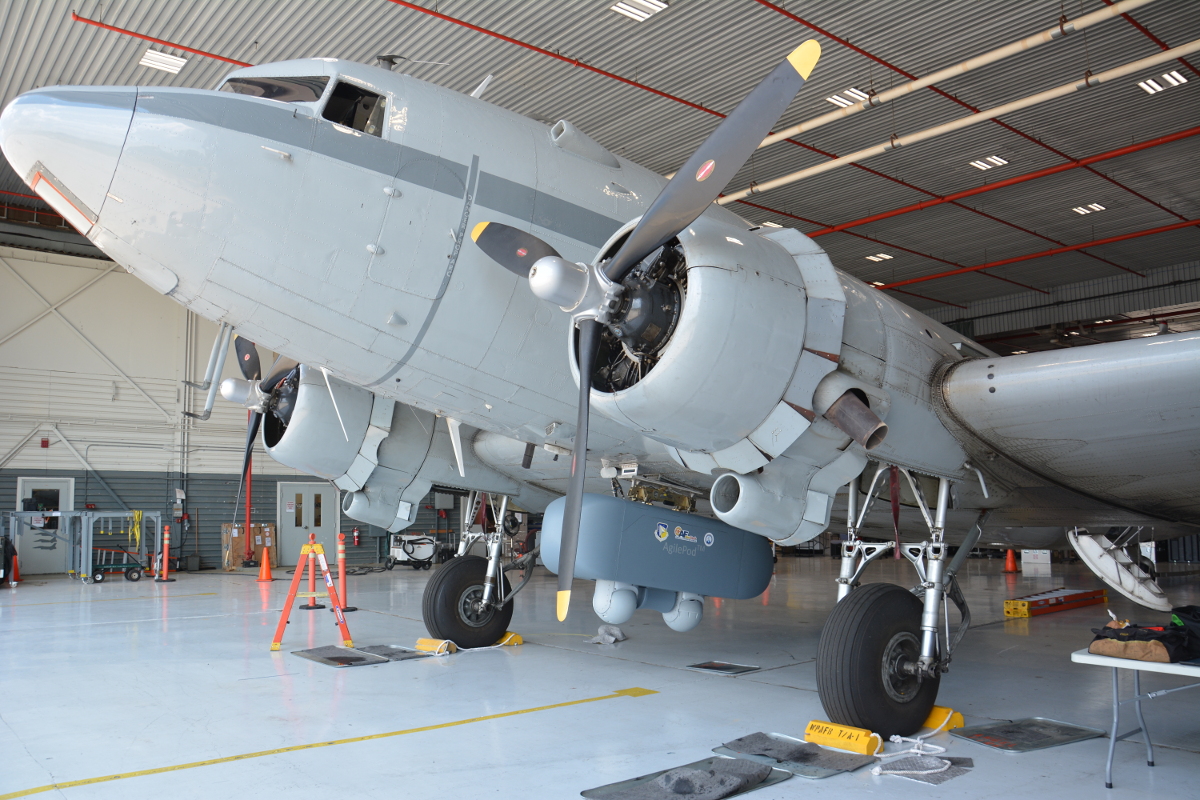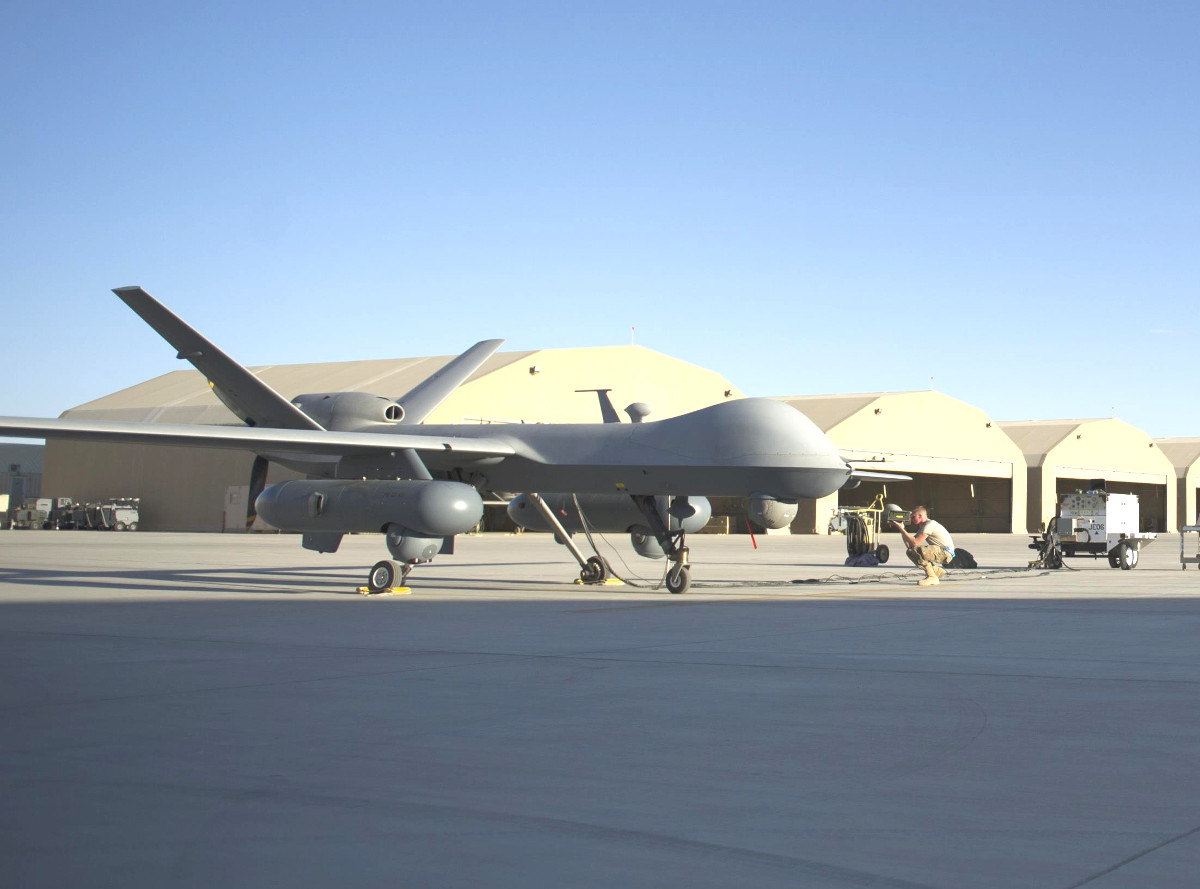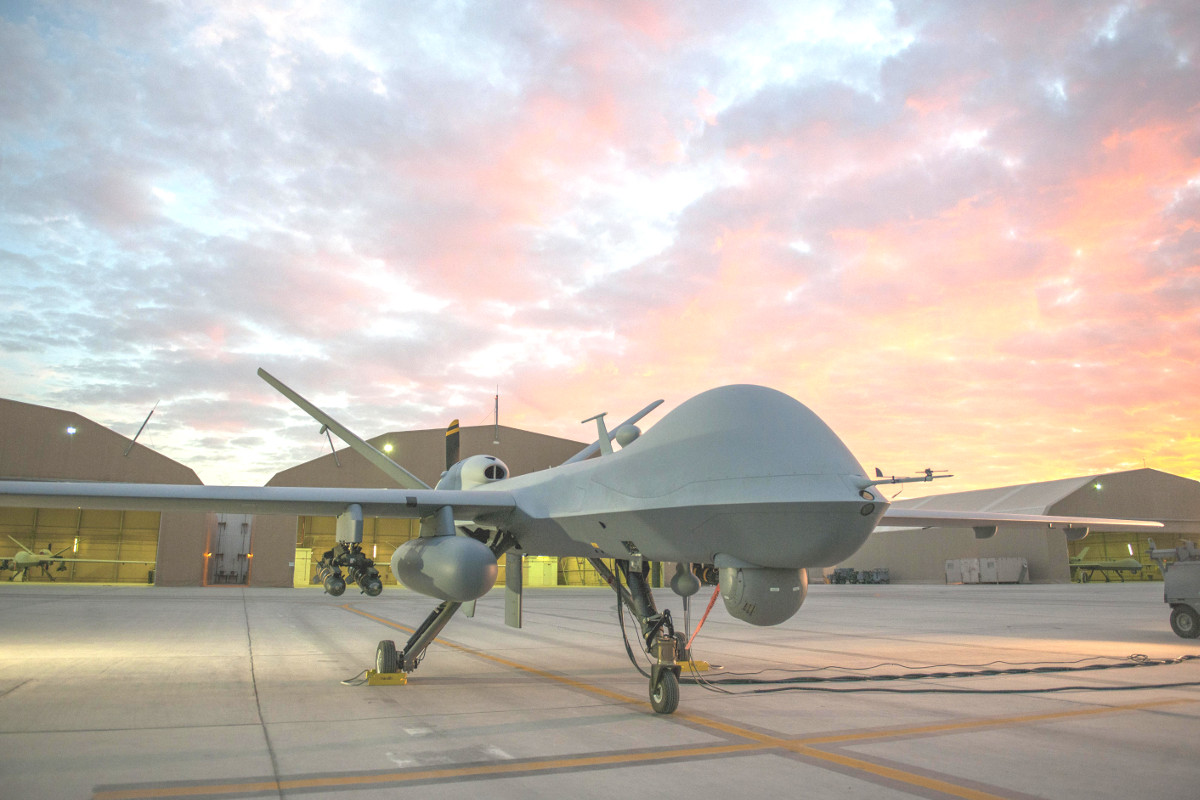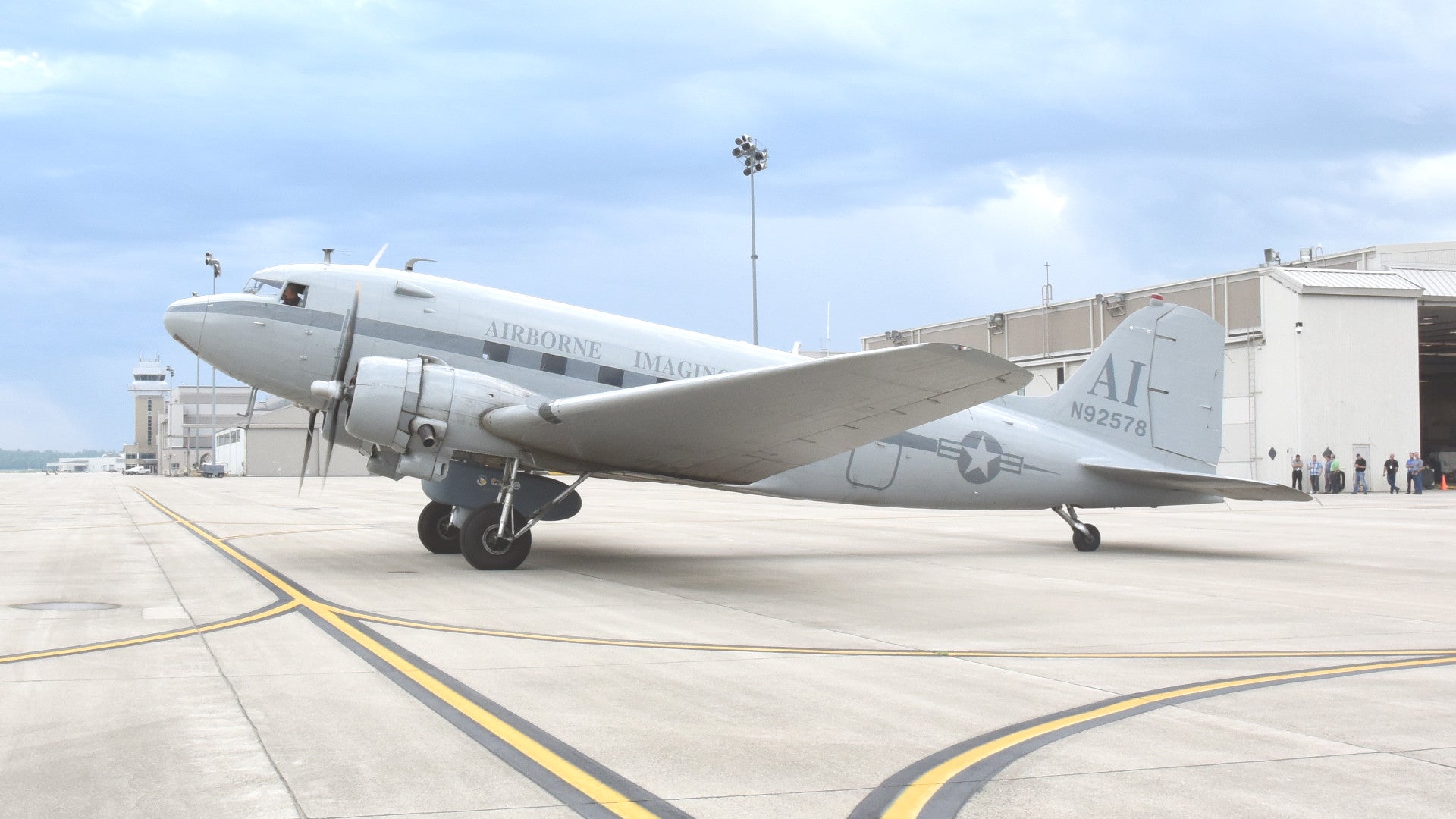The U.S. Air Force is testing a state-of-the-art sensor package, called AgilePod, which it hopes will ultimately offer all-new capabilities for surveillance aircraft and drones, such as the MQ-9 Reaper. But the service picked a decidedly less advanced platform for the initial flight tests, the venerable Douglas DC-3.
In June 2017, the Blue Guardian Program, part of the Air Force Research Laboratory’s Sensors Directorate, revealed that it had sent a prototype AgilePod – which is a registered U.S. government trademark by the way – aloft on a contractor’s DC-3 ahead of plans to install it on an MQ-9. As such, they had dubbed the experiments Project Harvest Reaper.
“AgilePod is a game-changer,” Air Force Captain Russell Shirey, the Blue Guardian Program Manager, declared to the service’s reporters. “Current sensor capabilities on aircraft are built for specific mission tasks, such as close air support or targeting, using proprietary software and hardware. Open system architecture standards combined with a single AgilePod having ‘plug-and-play’ capabilities and configurations enables one pod to perform hundreds of different mission sets.”
In short, the “Lego-like” unit is more of a shell than a system unto itself. It has the space and linkages to accommodate a variety of sensors and connect them to the aircraft. The pod is made of between three and five sections, each 30 inches wide and 30 inches tall, plus two aerodynamic end caps. The individual blocks can be either 28 or 33 inches long to accommodate different systems, giving it an overall length of between seven and 15 feet depending on the total number of sections.

Designed for relatively small aircraft like the Reaper, using Airborne Imaging’s DC-3 seems to have simply been a matter of both convenience and practicality. The Texas-based firm has supported various U.S. military projects in the past. The Defense Intelligence Agency is known to have tested its Shadow Harvest multi-sensor system – which has no obvious relationship to the Harvest Reaper or AgilePod programs – using a DC-3, as well. “The ability to rapidly test multiple configurations on the DC-3 aircraft gives us a ‘Lab-In-The-Sky’ concept and allows our team to wring out any issues before we move forward to the unmanned MQ-9, where we will not have the luxury of engineers in the cockpit,” Shirey added.
In its final form, AgilePod could conceivably carry various types of still and full-motion video cameras able to collect imagery during the day and at night, as well as signal detecting or communications listening equipment, and other electronic intelligence hardware, at once. Many of these systems have an inherent dual use when paired with jammers or other electronic warfare tools, too, opening up the possibility for even more functionality. The pod itself attaches to a pylon or other hardpoint using standardized lugs.
“Common connections and standards allows a greater suite of sensors to be rapidly integrated on the pod, enabling new capabilities,” the Blue Guardian program’s lead engineer Luke Borntrager explained. “Having standards helps ensure an operator can successfully command a sensor to turn on or off, left or right, similar to turning a key in the ignition in a car, without having the change the other aspects of the system.”

With sensors suites becoming smaller and smaller, there will only continue to be more options for AgilePod. It’s even possible that it could take over game-changing “wide-area aerial surveillance” (WAAS) functions, as well. This usually involves a complex set of cumbersome cameras that record multiple video feeds simultaneously, building a mosaic of a particular target area. Analysts can track potentially hostile movements and other significant changes on the ground below both in real-time or even retroactively. In June 2017, Israeli firm Elbit Systems unveiled its relatively small SkyEye WAPS system, which can capture full-motion video of up to 10 separate “regions of interest” at once with just one sensor turret.
The Air Force does already have MQ-9s configured for this role, but it requires carrying two large sensor pods that form the core of a system called Gorgon Stare. This essentially precludes the aircraft from doing anything else. Official photographs show the experimental AgilePod carrying two independent electro-optical turrets during at least one of the test flights.

This level of modularity makes perfect sense. If the AgilePod works as intended, during actual operations, crews on the ground could quickly swap out gear to better fir the situation at hand rather than having to prepare an entirely different aircraft or even just install a completely different pod. This would reduce the total number of aircraft a unit might need to be able to perform the different mission sets, as well as potentially speeding up the process of getting the appropriate equipment into the air. It would be especially useful for units at forward locations where existing infrastructure and resources may be otherwise limited.
With multiple sensors in a single pod, aircraft with limited hardpoints, such as MQ-9 with only four pylons, may be more readily able to bring additional equipment on missions and still have the a place to carry precision guided missiles or bombs to immediately attack any targets they uncover. It’s entirely plausible that AgilePod might be able to carry miniature weapons itself in the future, reducing the need for dedicated racks and launchers. Extended range versions of the Reaper already give up one of their pylons to an external fuel tank. Other services are sure to be interested in how well the system performs. In particular, the U.S. Army could use the pods to expand the capability of its own MQ-1C Gray Eagle drones, which have many of the same features and limitations as the Reaper.

Of course, individual manned or unmanned aircraft would only be able to perform the missions that the pod is configured for at any one time. However, the multiple stations inside the AgilePod would allow it to carry more than one type of sensor during each mission, which would still provide additional flexibility over some existing configurations. ARFL already has a number of examples within the Air Force and elsewhere in the U.S. military it can look to for evidence of the benefits of similar modular architecture.

In particular, the iconic U-2 Dragon Lady spy plane has remained in service for decades in no small part because of its ability to take on new roles with relative ease. The aircraft has a number of standardized sections, most notably the so-called “Q bay” underneath the fuselage behind the cockpit, which can accommodate palletized sensor packages and other equipment. In addition, the planes can carry various different nose sections, each with different equipment. Still, changing out any of this gear is nowhere near as easy as simply loading up a different AgilePod.

Another good example would be the sensor pod on the U.S. Marine Corps’ KC-130J Harvest Hawk gunships – again no obvious direct relationship to Harvest Reaper or AgilePod. The turreted camera fits onto the back of a standard underwing fuel tank simplifying the installation without necessarily reducing capability. There’s also the aforementioned, but more secretive Shadow Harvest program. Various private companies, such as Airdyne have also produced modular sensor pods to expand the capabilities of aircraft such as the C-130 Hercules airlifter. Notional configurations for the pods Airdyne offers with its Special Airborne Mission Installation and Response (SABIR) mounting system look very similar to the AgilePod in basic concept. U.S. Special Operations Command and the Air National Guard have both tested the SABIR mount. And there are increasing numbers of similar modular equipment pods for fighter aircraft, including Lockheed’s Legion Pod, which can combined infrared search-and-track functions with other sensors, as well as the Air Force’s Talon HATE unit, which has IRST capabilities and networked data links.
The Air Force hopes to test the AgilePod on an MQ-9 by the end of 2017. If those tests are successful, they could begin working on integrating the system onto other aircraft.
Contact the author: joe@thedrive.com
